Background
The “Establishment of High-Value Tree Species Breeding Center in Cambodia” project was launched under a bilateral agreement signed in 2018 between the National Forestry and Grassland Administration of China (formerly the State Forestry Administration(NFGA) and the Ministry of Agriculture, Forestry and Fisheries of Cambodia(MAFF), witnessed by the leaders of both economies. As one of the key forestry cooperation initiatives under the Belt and Road framework and the Action Plan for Building a China-Cambodia Community with a Shared Future, the project aims to establish a standardized tissue culture centre, greenhouse, and seedling awning in Phnom Penh, along with a demonstration plantation for valuable tree species in Siem Reap. By collecting, cultivating, and propagating Cambodia’s precious and endangered tree germplasm resources, the project seeks to promote sustainable forest management through China-Cambodia institutional collaboration, demonstrate advanced forestry practices, and strengthen Cambodia’s technical capacity in conservation and seedling production. The project also encourages green economic development in rural areas by establishing an eco-forestry demonstration farm integrating fruit picking, lodging, and environmental education. The project will be implemented over eight years (2020–2028), with a total budget of USD 6.86 million, including USD 5.46 million funded by APFNet.
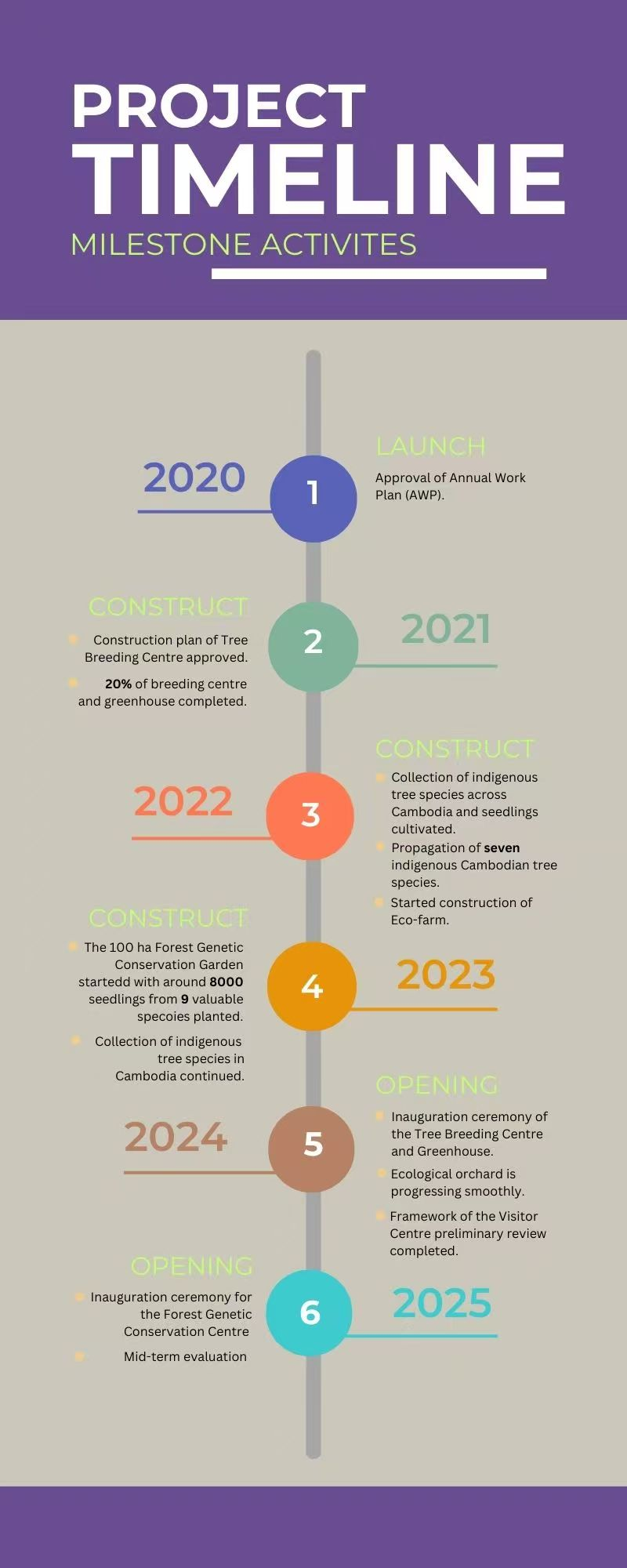
Key findings of midterm evaluation by independent consultant
A recent midterm evaluation of the Project highlights significant progress in promoting genetic resource conservation and green rural development while shedding light on challenges in seed propagation, infrastructure, and community engagement.
Latest project activities progress
--Specifically, the High-Value Tree Species Breeding Center, greenhouse, and seedling awning have been fully completed in Phnom Penh. The inauguration ceremony of the tree breeding centre and greenhouse was celebrated in July 2024, presided by H.E. Ung Samarth, Secretary of State of the Ministry of Agriculture, Forestry, and Fisheries(MAFF). Procuring and purchasing necessary laboratory equipment, collecting precious tree germplasm resources, producing seedlings by asexual approach and producing seedlings by seeds are also nearing completion. The project has collected germplasm resources from 65 precious tree species. Meanwhile, the construction of accessory facilities has made satisfactory progress, achieving over 70% of the planned target. However, some activities in constructing and maintaining the tissue culture and diagnostic lab facilities were completed at only 10%.
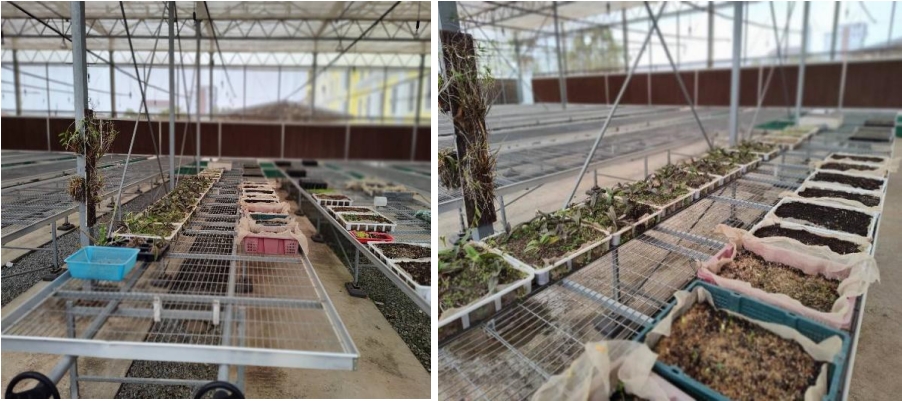
Figure 1 Germplasm resource collection and propagation have been conducted within the greenhouse(Photo by Dr. Preecha Ongprasert, Phnom Penh,2025) .
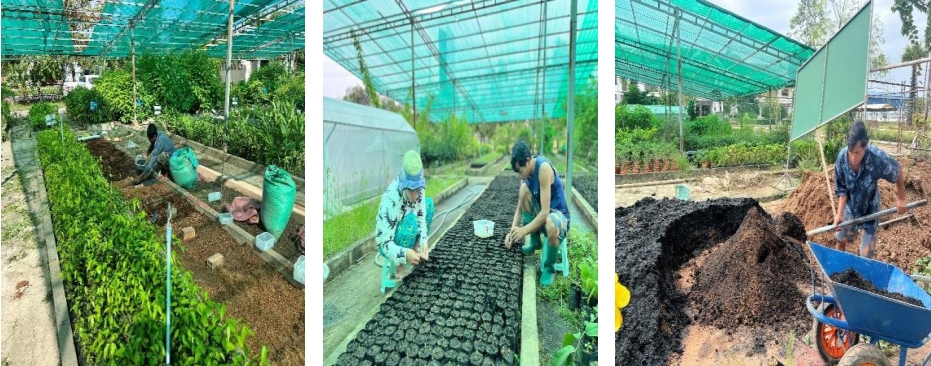
Figure 2 Totally 50,000 seedlings of 50 valued tree species have been produced since 2021 (Photo by Mr. Sreng Syneath, Phnom Penh,2025) .
--In Siem Reap, a 100 ha forest genetic resource conservation garden of valuable tree species has been fully completed. The visitor centre was completed and officially opened in March 2025. Moreover, 14 ha of high-value tree species forest and 3 ha of economic fruit tree forest have been established and are being maintained. The design and land preparation of the Eco-Forest-Farm has been completed, and 9 ha of economic forests and high-value tree species have been planted.
--Additionally, two training sessions on seedling production and afforestation techniques have been conducted for Cambodian forestry officials
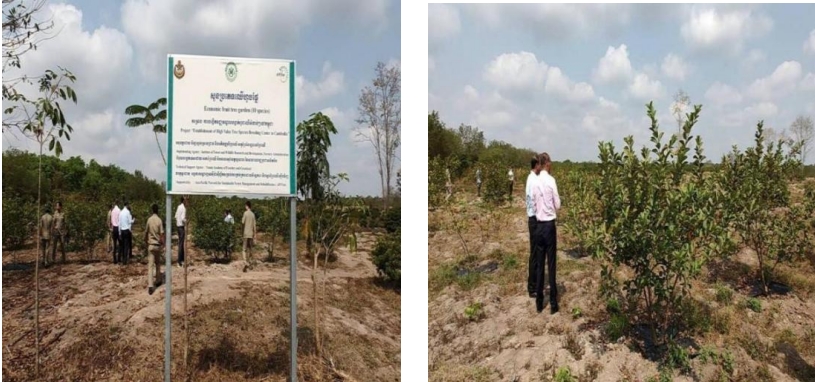
Figure 3 Economic fruit tree garden (Photo by Dr. Preecha Ongprasert, Siem Reap,2025)
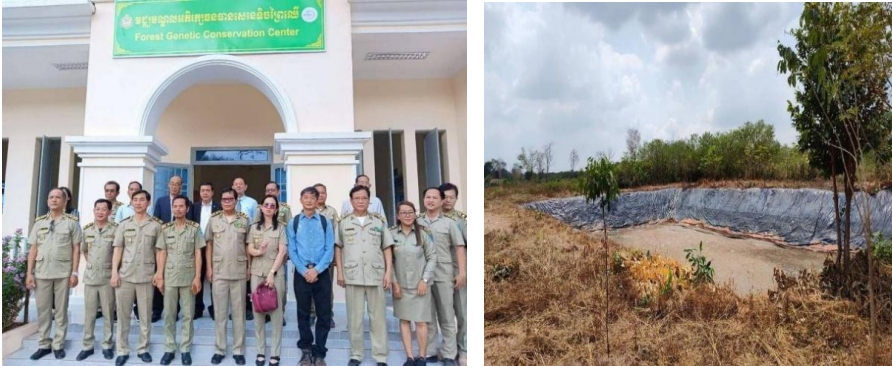
Figure 4 Forest Genetic Conservation Center and accessory facility(Photo by Mr. Sreng Syneath, Siem Reap,2025)
-- Some high-value tree species, including Mesua ferrea, Canarium album, and Irvingia malayana—proved difficult to propagate. Others did not produce seeds during the 2025 fruiting season. Limited expertise in seed germination, drought conditions, pest outbreaks, and low soil fertility further complicated efforts.
Countermeasures:
--Coordinating with local forestry officials and communities to improve seed collection planning.
--Conducting literature reviews to identify better germination methods.
--Allocating additional resources to plantation maintenance, including irrigation, fertilization, and pest control.
--Reassessing the suitability of selected species for target planting sites, with plans to replace unsuitable ones.
The evaluator also believes that technical support from the Yunnan Academy of Forestry and Grassland (YAFG) remains vital, particularly in providing training and guidance on lab operations.
The evaluator recommends several strategic adjustments for follow-up project activities:
· Continue building capacity among local staff and communities, especially in seed technology and eco-tourism.
· Expand alternative livelihood activities to reduce forest dependence, including nature-based tourism and value-added products.
· Improve water access and install permanent irrigation systems to boost seedling survival rates during the dry season.
· Ensure the Tourist Information Center and Eco-Forest Farm are effectively developed and managed sustainably.
· The project closely aligns with Cambodia’s current national strategies and long-term development plans for forest restoration, biodiversity conservation, and climate resilience.
In particular, it supports implementing the National Forest Program (2010–2030), which aims to increase forest cover, produce 10 million seedlings annually, establish 50,000 hectares of high-value forest plantations, and allocate 2 million hectares for community forests. The project contributes directly to these goals through the propagation of rare and valuable native species, enhancement of nursery technologies, and conservation of genetic resources.

According to Mr. Suon Sovann, Deputy Director General of the Forestry Administration, during the Inauguration Ceremony for the Forest Genetic Conservation Center in Siem Reap Province in 2025, “This project contributes directly to our national goals, particularly those outlined in the National Forest Program and the Pentagonal Strategy. The propagation and conservation of indigenous tree species not only help restore degraded forests but also enhance our scientific and technical capacities. We highly appreciate the strong cooperation between Cambodia and China in advancing sustainable forest development.” His remarks underscore the project’s alignment with national priorities and its potential to address key challenges in forest degradation, seedling quality, and community-based forest management.
The project also responds to the Pentagonal Strategy – Phase I (2023), which outlines a vision to increase forest cover to 60% by 2050 and strengthen environmental sustainability. Furthermore, it aligns with Cambodia’s Long-term Strategy for Carbon Neutrality (2021), highlighting forest-based carbon sinks and zero deforestation targets as key components of climate action.
By establishing a forest genetic resource conservation garden and an eco-forest farm, the project also contributes to the goals of the Circular Strategy on Environment (2023–2028), which calls for increased tree planting, natural resource conservation, and livelihood improvement in rural areas.
In line with the National Biodiversity Strategy and Action Plan (NBSAP), the project adopts both in-situ and ex-situ conservation approaches for rare and endangered tree species, including recovery programs, genetic resource preservation, and applied research on propagation technologies.
The project incorporates specific methods and best practices for forest restoration to ensure its success. These methods include Assisted Natural Regeneration (ANR), enrichment planting, strip planting, home gardening, and species screening. By implementing these approaches for degraded forests, the project demonstrates potential key successes in enhancing biodiversity in the area and improving livelihoods over the long term. Also, the Forestry Administration (FA) regularly provides guidance and recommendations to ensure successful project implementation.
The project also engages local communities in constructing eco-farm and forest management, providing stable employment opportunities while continuously improving livelihoods and the ecological environment.
Based on the above analysis, the evaluator firmly believes that the best practices of this project can be scaled up and replicated in other regions of Cambodia and similar contexts to mitigate the risk of biodiversity loss and enhance rural livelihoods.
For more about the projects, please see https://www.apfnet.cn/column295/column302/1122.html.